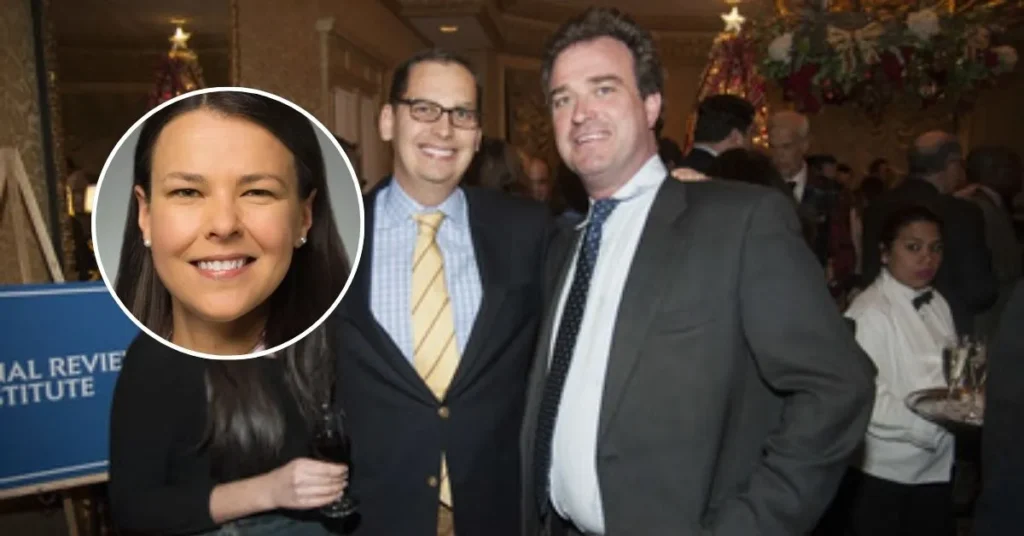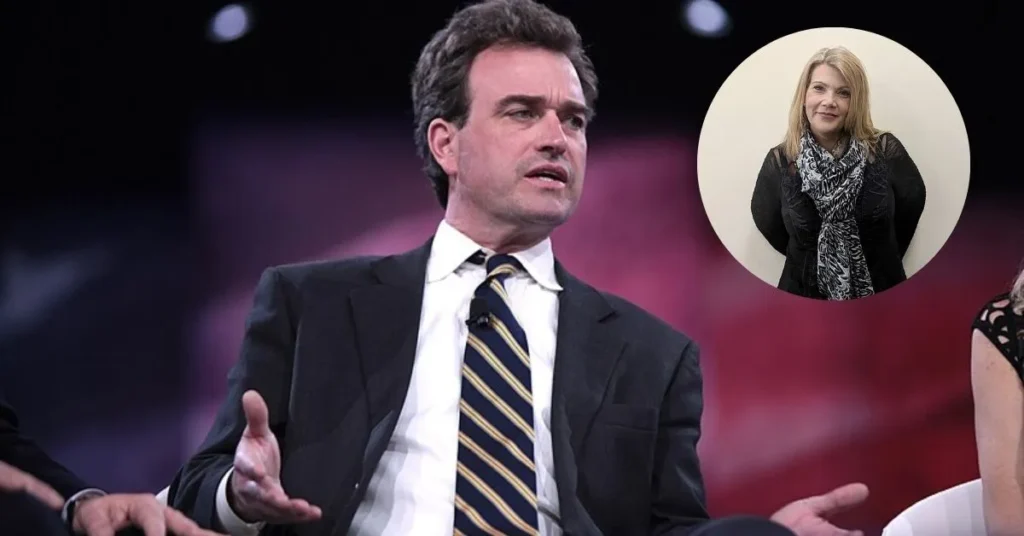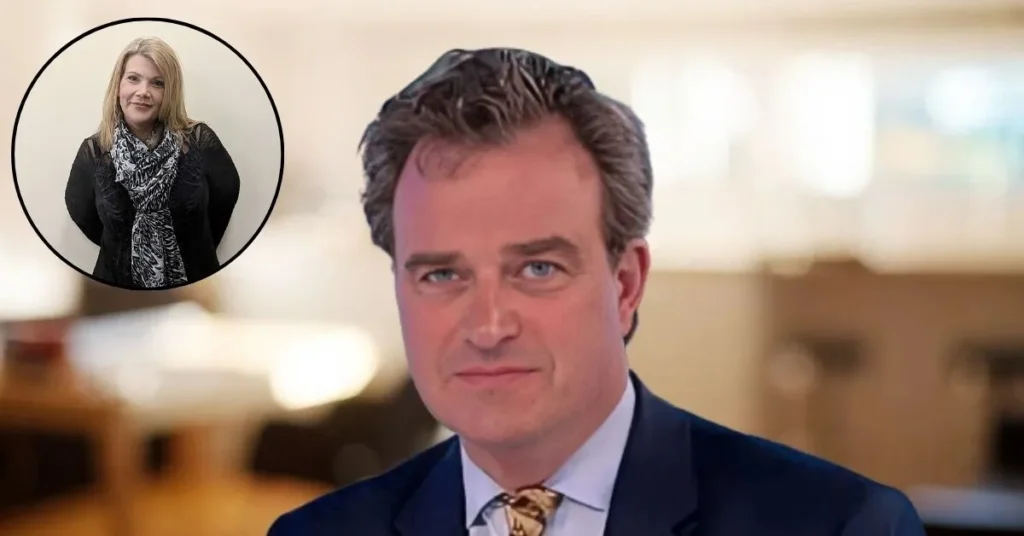Life’s most profound lessons often emerge from our deepest wounds. The story of Stephanie Hurt, wife of Charles Hurt, stands as a testament to the resilience of the human spirit in the face of heartbreaking betrayal. Their tale, beginning in the warmth of college romance and evolving through the complexities of marriage, infidelity, and ultimately personal transformation, offers invaluable insights into the nature of love, trust, and self-discovery.
Quick Facts
| Fact | Details |
| Name | Stephanie Hurt |
| Spouse | Charles Hurt |
| Marriage Duration | Spanned several years, starting in college |
| Initial Relationship Dynamic | Strong foundation of friendship, shared dreams, and emotional connection |
| First Signs of Trouble | Emotional distance, withdrawal, and increased focus on work by Charles |
| Discovery of Infidelity | Stephanie found intimate messages on Charles’s phone |
| Charles’s Reaction | Initially denied, later admitted to an affair; cited stress and “momentary lapse in judgment” |
| Reconciliation Efforts | Marriage counseling, open communication, and rebuilding trust |
| Challenges in Rebuilding Trust | Persistent anxiety, suspicion, and difficulty restoring intimacy |
| Turning Point | Stephanie prioritized self-care after realizing the toll of trying to save the marriage |
| Separation Decision | Based on self-awareness and the need to heal, not out of anger |
| Healing Strategies | Therapy, creative outlets (painting), yoga, and a strong support network |
| Role of Forgiveness | Focused on freeing herself from resentment, not absolving Charles |
| Current Status | Empowered individual; rebuilt her life on her terms |
| Key Lessons Learned | Importance of self-love, professional support, and personal growth |
| Advice to Others | Seek help, prioritize self-care, and remember healing takes time and effort |
What Caused the First Signs of Trouble?
The initial cracks in Stephanie and Charles Hurt’s marriage appeared subtly, like whispers in a quiet room. Their relationship, which had blossomed during their college years, began showing signs of strain when Charles’s behavior shifted dramatically. What once was a partnership filled with shared dreams and constant communication transformed into a landscape of emotional distance.
Charles, previously known for his attentive nature and loving presence, began spending increasingly long hours at work. The couple’s evening conversations, once filled with laughter and dreams, grew shorter and more superficial. These changes, though concerning, were initially rationalized by Stephanie as temporary stress from career pressures.
The transformation in their relationship dynamic became more pronounced when Charles started missing important family events and showing less interest in their shared activities. The emotional connection that had been their foundation began to erode, leaving Stephanie feeling increasingly isolated in their marriage.
How Did Stephanie Discover the Infidelity?

The truth revealed itself on what seemed like an ordinary evening. While Charles showered, his phone buzzed repeatedly with incoming messages. Stephanie, who had never been the type to invade her husband’s privacy, found herself drawn to the persistent notifications. The messages she discovered painted a picture that would forever alter their marriage.
The revelation came through a series of intimate exchanges between Charles and another woman. These weren’t just casual conversations but deeply personal messages that spoke of a connection that had been developing for months. The discovery sent Stephanie’s world into a tailspin, challenging everything she believed about their marriage.
The impact of this discovery was immediate and devastating. Stephanie found herself facing not just the reality of her husband’s infidelity but also questioning every moment of their shared history. The weight of this betrayal manifested in both emotional and physical symptoms, from sleepless nights to a profound loss of appetite.
How Did Charles Respond to the Confrontation?
When faced with evidence of his infidelity, Charles’s response followed a painfully predictable pattern. Initially, he attempted to dismiss the messages as harmless workplace interactions. His defensive posture only intensified Stephanie’s emotional turmoil, as she watched the man she trusted struggle with the truth of his actions.
Eventually, beneath the weight of undeniable evidence, Charles’s defenses crumbled. His admission of the affair came wrapped in a series of justifications and excuses, citing work stress and emotional distance in their marriage. The phrase “momentary lapse in judgment” became a bitter pill for Stephanie to swallow, as the affair had spanned several months.
The confrontation revealed deeper issues within their marriage that had gone unaddressed. Charles’s inability to take full responsibility initially only deepened the wound of betrayal, leaving Stephanie to grapple with both the pain of infidelity and the frustration of incomplete honesty.
What Steps Did They Take to Rebuild Their Relationship?
In the aftermath of discovery, both Stephanie and Charles made the difficult decision to attempt reconciliation. They sought professional help through marriage counseling, committing to weekly sessions that forced them to confront uncomfortable truths about their relationship.
The counseling process revealed patterns of communication breakdown that had contributed to their marital problems. Together, they learned new ways to express their needs and fears, though the shadow of betrayal loomed large over every interaction. Charles demonstrated what appeared to be genuine remorse, actively participating in therapy and making efforts to rebuild trust.
Their journey included implementing new relationship strategies: scheduled date nights, daily check-ins, and complete transparency with phones and social media. These steps, while necessary, often felt like bandages on a deeper wound that refused to heal completely.
What Were the Challenges in Rebuilding Trust?
The path to rebuilding trust proved to be the most challenging aspect of their reconciliation attempt. Every late night at work, every text message, and every unexplained absence triggered Stephanie’s anxiety and reopened emotional wounds. The psychological impact of betrayal manifested in unexpected ways, affecting their intimacy and day-to-day interactions.
Charles struggled with the constant scrutiny, sometimes expressing frustration at what he perceived as excessive monitoring. This reaction only served to deepen Stephanie’s insecurities, creating a cycle of suspicion and defensiveness that proved difficult to break.
Despite their best efforts, the ghost of infidelity continued to haunt their relationship. Simple activities like social gatherings or work events became sources of stress, as Stephanie battled internal fears while trying to maintain a facade of normalcy.
When Did Stephanie Reach a Turning Point?

After months of attempting reconciliation, Stephanie experienced a profound awakening. During a particularly sleepless night, she realized she had lost herself in the process of trying to save her marriage. The constant vigilance, the emotional energy spent analyzing Charles’s every move, and the perpetual anxiety had taken a severe toll on her mental and physical well-being.
This epiphany came not as a sudden flash but as a quiet understanding that grew stronger with each passing day. Stephanie recognized that her efforts to rebuild trust were overshadowing her own needs for growth and happiness. The turning point wasn’t marked by anger or resentment, but by a clear-eyed assessment of what she needed to heal.
The decision to separate wasn’t made in haste or spite. Instead, it emerged from a place of self-awareness and the recognition that sometimes loving yourself means walking away from something that no longer serves your highest good. This realization marked the beginning of Stephanie’s true healing journey.
How Did Stephanie Begin Her Healing Journey?
Stephanie’s path to recovery started with professional therapy focused solely on her personal growth. Unlike the couple’s counseling sessions, these meetings centered on processing her trauma and rebuilding her sense of self. She worked with a therapist who specialized in helping individuals recover from relationship betrayal.
During this time, Stephanie rediscovered old passions that had been set aside during her marriage. She returned to painting, a hobby that had brought her joy in college, and began taking weekly yoga classes. These activities provided not just distraction but genuine outlets for emotional expression and healing.
Her support network played a crucial role in this phase. Friends and family who had witnessed her struggle now became pillars of strength, offering both emotional support and practical help as she navigated her new independence. Their presence reminded her that she wasn’t alone in her journey.
What Role Did Self-Love Play in Her Recovery?
The concept of self-love transformed from an abstract idea into a daily practice for Stephanie. She began implementing morning rituals that included meditation and journaling, creating space to process her emotions and set intentions for each day. These practices helped her reconnect with her inner voice, which had been muted during the tumultuous period of her marriage.
Through therapy, Stephanie learned to identify and challenge negative thought patterns that had developed during her marriage. She discovered that many of these thoughts centered around self-blame and unworthiness, realizations that helped her understand the importance of rebuilding her self-esteem.
The process of learning to love herself again involved setting healthy boundaries in all relationships, not just romantic ones. She discovered that saying “no” to things that didn’t serve her well-being was an act of self-respect, not selfishness.
Why Did Forgiveness Matter?
The journey to forgiveness proved to be one of the most challenging yet transformative aspects of Stephanie’s recovery. She came to understand that forgiveness wasn’t about absolving Charles of responsibility, but about freeing herself from the burden of anger and resentment that had become toxic to her well-being.
Through dedicated inner work and therapeutic guidance, Stephanie discovered that forgiveness was a gift she gave herself rather than Charles. This shift in perspective allowed her to release the constant replay of painful memories and redirect that energy toward her own growth and healing.
The process wasn’t linear, and some days were harder than others. However, each step toward forgiveness lightened the emotional load she carried. As one of her journal entries revealed: “Forgiveness isn’t forgetting – it’s choosing to no longer let the pain control my future.”
Where Is Stephanie Now?

Today, Stephanie stands as an embodiment of resilience and personal transformation. Her journey from heartbroken wife to empowered individual has inspired many others facing similar challenges. She has rebuilt her life on her own terms, creating a new narrative that centers on personal growth and authentic happiness.
Her professional life has flourished as she channeled her experiences into helping others through their own healing journeys. While she maintains appropriate boundaries regarding her past, she’s open about the lessons learned and the strength gained through adversity.
The woman who once defined herself primarily as “Charles Hurt’s wife” has emerged as a whole person in her own right. Her story continues to evolve, marked not by the betrayal she endured but by the wisdom and strength she gained through her recovery.
Read more: Stephanie Mead Age – Bio, Husband, Height, Fox2, Net Worth
FAQs About Stephanie Hurt’s Journey
How long did Stephanie and Charles’s marriage last?
Their marriage spanned several years, beginning with their college romance and ending after the discovery of infidelity and subsequent attempts at reconciliation.
What were the most effective healing strategies for Stephanie?
Professional therapy, self-care practices, creative expression through art, and building a strong support network proved crucial in her recovery process.
Did Stephanie maintain any contact with Charles after separation?
While maintaining necessary boundaries, any contact was limited to essential matters, allowing both parties space for individual healing.
How did Stephanie rebuild her confidence after betrayal?
Through consistent therapy, personal development work, reconnecting with old passions, and cultivating new interests and relationships.
What advice does Stephanie offer to others in similar situations?
She emphasizes the importance of self-love, professional support, and understanding that healing is a personal journey that takes time and patience.
Final Words
Stephanie Hurt’s journey from heartbreak to healing serves as a powerful reminder that while we cannot control others’ actions, we can choose how we respond to life’s challenges. Her story illustrates that true healing often requires making difficult choices and prioritizing self-love over familiar but unhealthy relationships.
For those walking similar paths, remember that healing isn’t linear, and there’s no prescribed timeline for recovery. The journey from betrayal to wholeness is deeply personal, and each step forward, no matter how small, is progress worth celebrating.
If you’re facing similar challenges, know that professional help is available, and seeking support is a sign of strength, not weakness. Your story, like Stephanie’s, doesn’t end with heartbreak – it’s simply the beginning of a new chapter waiting to be written.

I manage KickyReport.com, a news-driven platform where I deliver timely updates. My focus is on keeping readers informed about the latest events and trends.
